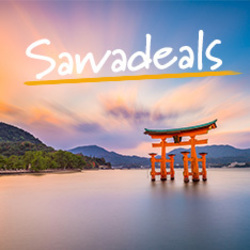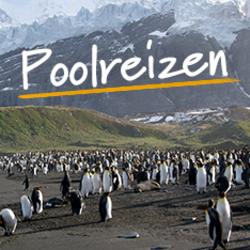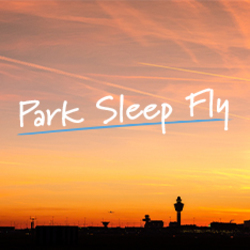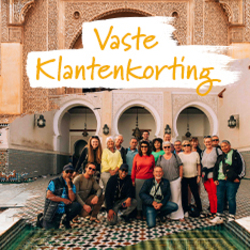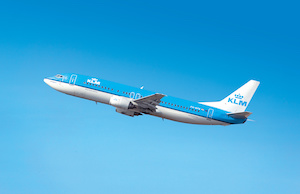Activities
- Culture
- Natural Wonders
- Visit Iceland's Golden Circle of Geysir, Thingvellir and Gullfoss. Dramatic scenery of the Snæfellsnes Peninsula. Striking black-sand and iceberg-strewn Diamond Beach24-hour sunlight in summer or possibility to see Northern Lights in winter
Food
-
1
Our trip begins in Reykjavik with a short briefing at the hotel.
Our trip begins in Reykjavik with a short briefing at the hotel.
-
2
Visit Thingvellir volcanic rift, Geysir waterspouts and Gullfoss Waterfall; to Hella.
Today we drive inland to the Thingvellir World Heritage Area, where the world's first 'democratic parliament' meeting took place - the area became Iceland's first National Park in 1928 and a World Heritage area in 2004. Sitting right on top of a major fault line it is the best place in Iceland to see the continental drift - the movement of the Eurasion and North American tectonic plates. Here they are literally pulling the earth apart as they inch away from each other causing the land between to subside. Not surprisingly the area abounds with waterfalls, immense fissures and the largest lake in the country. We then carry on to see the world famous geysers. The most reliable eruption comes every 5-10 minutes from one called 'Strokkur'; the 30-metre jet of water and steam is spectacular. To round off the day we drive a short distance on to Gullfoss, a huge dramatic waterfall located in a 70m deep canyon of River Hvita (White River).
-
3
Across southern Iceland towards the Eyafjallajokull Volcano Ice Cap, visiting Kvernufoss and Skógafoss Waterfalls plus sea-cliffs, famous for puffins and on to the beautiful Jokulsarlon Glacier Lagoon.
We head east to the foot of the infamous Eyjafjallajokull Ice Cap; this area was heavily affected by ash fall during the eruption of 2010 and a great deal of ice was melted by the boiling lava. The glacier feeds many beautiful waterfalls and we visit two of them: Skógafoss and Kvernufoss. Both have rushing water dropping 60m, and in the case of Skógafoss, this wall of water rushes down in a 25m wide sheet, providing quite a spectacle.Continuing east, we cross the black flood-plain of Solheimasandur, before reaching the green valley of Myrdalur and continuing to Dyrholaey. This dramatic 120-metre high promontory is the southernmost point in Iceland. It is rich in birdlife, and a nesting site for Puffins and Arctic terns in spring. If we are lucky we might see whales and seals from the promontory on calm days. We continue further east to Vik, Iceland's southernmost town, a great place from which to see the Reynisdrangar needles. Then it is further across Myrdalssandur flood plain and then Skeydararsandur flood plain. Both created by the countless floods created by volcanic eruptions over time. We head for Vatnajokull NP with Europe's largest ice cap, Vatnajokull and it further on to the famous Glacier Lagoon at Jokulsarlon where thousands of icebergs are separating from the country's largest glacier and are floating in the pale green sea-level lagoon. We take a walk beside the lagoon for excellent views and if conditions allow can head down to the black sand beach where chunks of ice are washed back up onto the shore by the sea, creating some wonderful shapes and formations. We then continue further east with the steep mountains of Vatnajokull on one side and the exposed south coast on the other, to our accommodation
-
4
Today we explore the beautiful east of Iceland, full of glistening fjords, fishing villages and rich widlife.
A day of scenic driving, with a number of stops as we travel through fjord country. This stunning mountain region has been sculpted as much by glaciers as volcanic activity. The spectacular road winds from one fjord to another, passing a few farms in each fjord where there is enough flat land for hayfields. The birdlife is rich and in late summer thousands of moulting whooper swans feed in the sheltered lagoon of Alftafjordur (Swan fjord). We then continue to the town of Egilsstadir
-
5
Studlagil Canyon, Saenautasel farm, Dettifoss Waterfall and the volcanic Myvatn area.
Heading inland and west we pass through the starkly contrasting desert scenery of the North East Highlands and follow the track that takes us north to Jokuldalur valley and to Studlagil Canyon, one of the most beautiful canyon of Columnar basalt in Iceland. Then it's on to Saenautasel farmstead a short distance away. Saenautasel was left abandoned due to have ashfall shortly after the volcano Askja erupted in 1875. From Saenautasel we drive enroute Modrudalur to the enormous Dettifoss Waterfall. This is Europe's most powerful waterfall, bizarrely set in an arid area of sand and rock formations. Our journey then takes us on to the Krafla volcano area to explore the craters and lava from the eruptive period of 1975-1984. We hike into one of the craters and look at the strange textures of cooled magma splatters and rich colours of the mineral deposits. From Krafla we head for our hotel at Lake Myvatn.
-
6
Lake Myvatn, Hverfjell, Godafoss, Akureyri
We spend the day around Lake Myvatn and go for a short walk in the lava fields and craters. We start at Dimmuborgir, a vast area of lava towers and natural arches. The most spectacular of them is 'the Church', a large vault resembling a church. Only a short distance from Dimmuborgir is Mt. Hverfjall, a huge circular crater with a depth of 140 metres and 1000 metres in diameter. It is one of the most beautiful craters in Iceland, one which erupted some 2500 years ago and covered the Myvatn area in tephra (fragments of volcanic rock). It is also thought to be one of the largest on the planet. We traverse Mt. Hverfjall, and a little further north is the rift crevasse Grjotagja with its crystal clear warm water. We explore the pseudo craters of Skutustadir. After Myvatn we head to the Godafoss Waterfall en route to Akureyri.
-
7
Siglufjordur, Hofsos, Borgarvirki, Kolugljúfur Canyon
A free morning in Akureyri. Akureyri is a town of some 17,000 inhabitants and is the biggest town outside the capital. It is the cultural, commercial and educational centre for northern Iceland and is 60 km south of the Arctic Circle. Whale watching tours depart regularly and there are a number of great museums to visit. This northerly town is also remarkably green and has the northernmost botanical garden in the world. The Lutheran church in Akureyri is an interesting visit, featuring a stained-glass window above the altar that has its origins in England.As with most towns in Iceland there are also thermal baths, enjoyed as much by the locals as by visitors, and if you just fancy a wander, there are plenty of interesting shops, coffee shops and even ice cream parlours. If you don’t want to relax and explore town then an optional whale watching tour is possible in the morning.We leave Akureyri and drive around the Troll Peninsula, via traditional fishing villages on the peninsula. We stop at the magnificent outdoor swimming pool at the village Hofsos and go for a quick dip. This remote geothermal swimming pool has some of the best views in the country over the Skagafjördur bay. We head further south and stop at Borgarvirki, an old Viking fortress. The Citadel is a columnar basalt fortress and a volcanic plug. A little further south we head into Vididalur valley and make a short stop at beautiful waterfalls in Kolugljúfur canyon, named after a giantess, once said to live in the area. From Kolugljúfur we head for our hotel close by.
-
8
Snæfellsnes Peninsula, vikings and Stykkisholmur
Today we drive west to the Snæfellsnes Peninsula. Along the way we visit a reconstructed Viking house once home to Eirik the Red and his son Leif Eiriksson - the two most famous travelling Vikings. The 'Eirikstadir' gives an interesting insight to way of life for the early settlers and an introduction to the historic tradition of the 'Icelandic Sagas'. From Eiríksstaðir we head for the village of Stykkishólmur.Snæfellsnes is perhaps best known for the stratovolcano 'Snæfellsjökull'. Jules Verne, in his classic 'Journey to the Centre of the Earth', describes this as the start point for the characters' descent. New Age followers consider this area to be one of the earth's seven major energy centres. We head to our accommodation, located on the southern side of the peninsula, on the beach with great views over Snæfellsjökull.
-
9
Follow the Snæfellsnes coast before starting back for Reykjavik
The exposed coast of the of Snæfellsnes peninsula is the goal for today, and this area has recently been designated a National Park. We visit the old church at Budir, one of the most picturesque in the country. Sea cliffs at Arnarstapi swarming with birds, to the rocks of Djúpalónssandur and the sites of old shipwrecks in the black basaltic sand. Our guide will tell us about the old cod-fishing methods from open boats in the bountiful seas and towering above us is the volcano - Snæfellsjökull. Some of the best fisheries are of the peninsula and whales can often be seen from shore on calm days. We pass through fishing villages on the peninsula and head to one of the most photographed mountains in Iceland, Mt. Kirkjufell. After Kirkjufell we head back to the capital.
-
10
Our trip ends in Reykjavik after breakfast.
Our trip ends in Reykjavik after breakfast. Flybus transfers are available to the airport.




